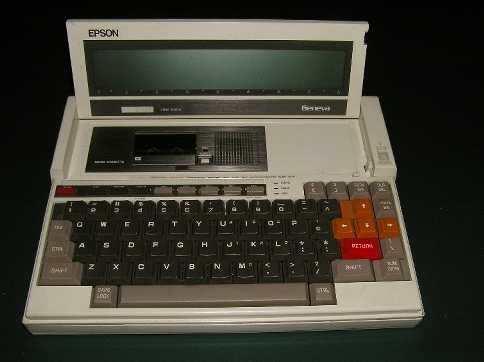




|
NAME |
PX 8 / HC-88 |
|
MANUFACTURER |
Epson |
|
TYPE |
Portable |
|
ORIGIN |
Japan |
|
YEAR |
1984 |
|
BUILT IN LANGUAGE |
Microsoft Basic |
|
KEYBOARD |
Full-stroke 72 key with function keys and cursor keys |
|
CPU |
Zilog Z80 (+ Hitachi 6301 for I/O) |
|
SPEED |
2.45 MHz (Z80) / 614 KHz (6301) |
|
RAM |
64 KB (up to 184 KB) |
|
VRAM |
6 KB |
|
ROM |
32 KB |
|
TEXT MODES |
8 lines of 80 characters |
|
GRAPHIC MODES |
480 x 64 dots |
|
COLORS |
LCD monochrome display |
|
SOUND |
Beeper - Volume control |
|
SIZE / WEIGHT |
29.7 (W) x 21.6 (D) x 4.6 (H) cm (A4 size) / 1.8 Kg |
|
I/O PORTS |
RS232, bar code reader, bus, ADC, cartridge, analog in (2) |
|
BUILT IN MEDIA |
Small tape recorder |
|
OS |
CP/M 80 |
|
POWER SUPPLY |
External 6V. AC adaptor and rechargeable Ni-cad battery |
|
PERIPHERALS |
64 KB or 128 KB Memory expansion units, 3.5'' and 5.25'' FDD units |
|
PRICE |
ё798 |
|
Epson Geneva PX-8
|
|
Geneva PX-8 |
|
The PX-8 was designed to be compatible with CP/M programs but these may need some modifications due to the display system. Actually, 8 lines of 80 characters were shown at any one time, but the display could be scrolled through up to 48 lines.
It may also act as a terminal for other computers.
|
